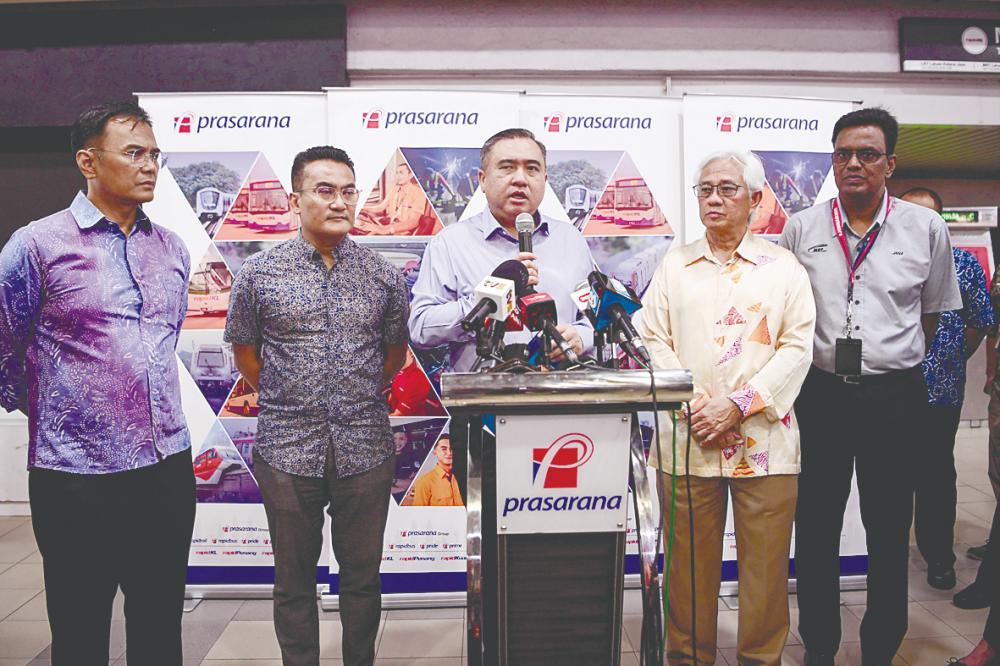KUALA LUMPUR: The redevelopment of KL Sentral is slated to commence next year, with discussions between the Public-Private Partnership Unit (Ukas) and Malaysian Resources Corporation Bhd (MRCB) anticipated to be finalised within the next two to three months.
Transport Minister Anthony Loke said the project is based on a public-private partnership (PPP) and requires finalising the terms and conditions between Ukas, which comes under the Prime Minister’s Department, and the developer.
“The Ministry of Transport aims to conclude negotiations within two to three months. If not by the end of this year, then hopefully early next year, to ensure the redevelopment can commence next year,“ he said at a press conference after a Rapid KL Operations Post-Budget 2025 briefing by Prasarana Malaysia Bhd today.
Loke said that MRCB will bear the construction cost under the PPP agreement. “So the government will not give a single sen in terms of the construction cost. But they will get the air rights in return.”
In real estate, air rights refer to a property owner’s entitlement to the vertical space above the site. This grants the property owner control over the land and the airspace above it, potentially unlocking valuable development opportunities.
Loke said the rights allow the developer to build mixed-use developments, such as commercial and residential buildings on top of or next to the station.
However, he said MRCB must first complete the redevelopment of the station itself before proceeding with property development. “They will get air rights to build on top of the station, but the condition is that they must complete the station first before they can develop.”
Loke stressed that KL Sentral must remain fully operational while the redevelopment work is going on. “KL Sentral cannot be closed even for one hour. So, the construction has to consider the life operation of KL Sentral. All that is being finalised right now.”
At the same time, Loke expressed confidence that the number of public transport users will continue to increase next year, especially with the opening of the LRT3 line.
One improvement Loke has requested Prasarana to implement quickly is integrating the My50 pass with the Touch ‘n Go e-wallet.
“Currently, users must go to the counter to renew their My50 pass every month. I want to reduce congestion at the counters and make it easier for users, so they no longer have to queue to renew their passes each month, and this will be integrated with the e-wallet,“ he explained.
Th integration, in partnership with Touch’ n Go Digital, is expected to be implemented within a few months, with the aim of easing the process for users by next year.
On the LRT, Loke said the Kelana Jaya line had only 41 train sets in 2022, but now there are an average of 56 train sets daily.
During peak hours in 2022, a trip took more than four minutes. Now, it takes three minutes.
Loke said, “Every three minutes during the morning and evening peak hours, a train arrives, so passengers don’t have to wait long, and there are more trains available, though I acknowledge that there is still congestion during peak hours.”
However, the situation has improved compared to the past due to adding more trains.
“We are aiming for trains to run every 2.8 minutes during peak hours next year, with an average of 59 train sets operating. The same applies to the Kajang line. In 2022, there were only 28 train sets. Now, we have 39 sets in operation. In the same year, the Kajang line had a frequency of 5.6 minutes during peak hours. Now it is 4 minutes. The Putrajaya line operates with 37 sets.”
Loke noted that the number of train sets has increased, and their frequency has improved compared to two years ago. Another critical component is reliability, meaning that train disruptions have decreased. “For the Kelana Jaya line, in 2022, there were 49 disruptions throughout the year, but this year, up to September, we have only had 21 disruptions, so we’ve reduced disruptions by more than half.”
The improvement is due to Prasarana’s increased focus on train maintenance, with more resources allocated to repair and maintenance work to ensure greater reliability.
Loke said the Transport Ministry will continue closely monitoring Prasarana’s performance. “As I mentioned, we monitor Prasarana weekly. One of the actions I have implemented is to present weekly performance monitoring reports to the ministry.”









